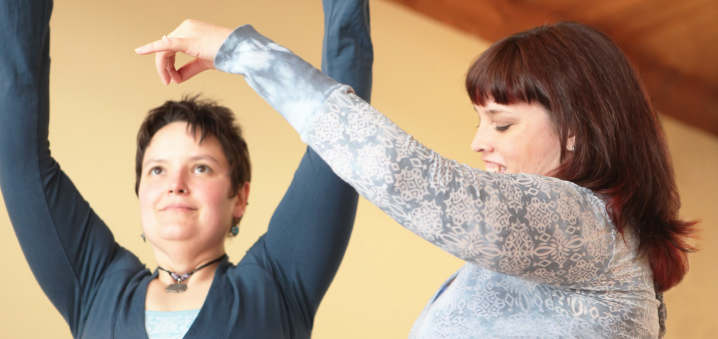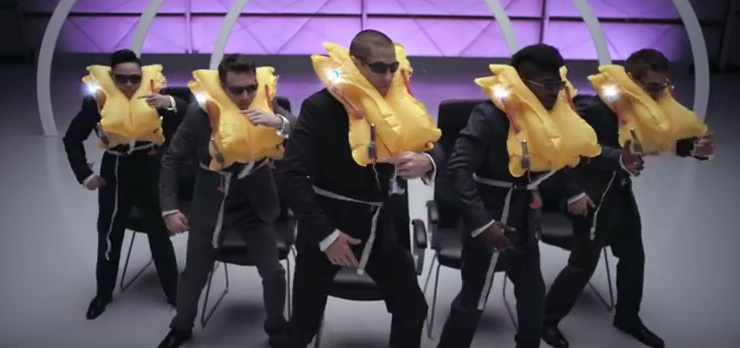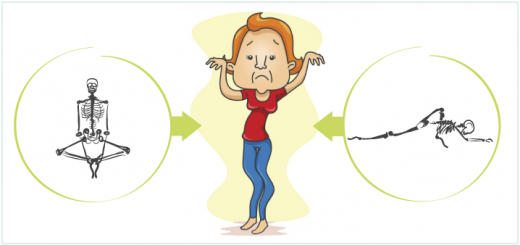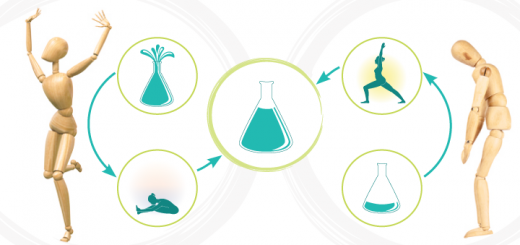How to capture your students’ attention (Part 2)
7Have you been on an airplane lately? It seems that no matter what airline you fly nowadays, they all are trying to outdo each other with their safety videos to get our attention. Virgin airlines had raised the bar way up high by making a music video out of it with an original song and complex choreography (if you haven’t seen it, check it out, it’s quite fun).
What does that have to do with teaching yoga? – you ask. Are yoga teachers supposed to break into a song and leap around during their yoga classes? Of course not. But it illustrates an important point that is relevant to yoga teachers: students’ attention wanders easily, especially with things that they have heard many times before, so we need to have some tricks up our sleeves to first get students’ attention and then keep it.
To get students’ attention we usually need to do one of three things: something new, something unexpected or something relevant. Our brains are wired that way. Imagine yourself driving home along your usual route mostly on an autopilot, thinking about your day. You turn the corner and boom – there is a deer on the road. That will get your attention – you didn’t expect a deer – and will require you to take action. Or maybe there is construction on the road – that’s something new, it will get your attention and will keep your attention as you make your way through a re-route. Or maybe you hear something on the radio that suddenly answers the question that you’ve been wondering about in your head – it gets your attention because it’s relevant to you right this moment.
It works the same way in your yoga class. Right off the bat we can get students’ attention by introducing an intention for the class that is new, unexpected and/or relevant. For example you can say: “You know, snakes become aware of their surroundings through their bellies because they feel the reverberations of the earth around them [new piece of information that is also an unexpected beginning for a yoga class]. So today we will focus on honing in on our own “gut instincts” as we move through the practice [which is interesting and may be relevant to many students].” You can experiment with different intentions for your yoga classes and try to figure out which ones your students respond best to. (Check out 10 types of practices) In a small class you can ask your students directly how they feel and what they feel they need and base your class on their responses – this will make it relevant to them.
Setting an appropriate intention for the class is crucial: it will set the direction for where you are going, determine which road you take to get there and how present your students will be for the ride. This is why personally I never ask students to set their own intention for the practice. First of all, it sounds really broad, most students will think : ”I just want to stretch” or ignore it all together. Then if you don’t know what intention they set, how can you help them get there? And if they voice their intentions, what do you do if they conflict with one another? When you are doing your own practice or working with somebody one-on-one it is necessary to set an individualized intention. In the class environment I believe that this is the teacher’s decision to make, while taking into account students’ requests. That way the teacher can also take responsibility for choosing the best practices to manifest that intention.
Once you choose your intention, even the most familiar poses will appear in a whole new light. If you are focusing on the “gut instincts”, you will be bringing students’ attention to their bellies in almost every pose, observing the sense of contraction, spaciousness or vibration there, asking them to listen to their intuitive response to the pose, or however else you choose to frame it. That’s the fun part of it – you don’t have to introduce entirely new poses constantly – all you have to do is change the perspective from which the students view the familiar and that alone might lead to some Aha! moments.
Here are some other ideas that will keep students’ attention throughout the practice:
- Keep the structure of the class consistent but change the details. Reorder things, make transitions different, pause in unexpected places, things like that. Our brains are wired to be keenly aware of changes, so whenever we detect a deviation from the familiar, we pause to notice. Choosing different pose adaptations works great for that. Direct your students to do something different with their arms in the pose (while making sure that it corresponds with the overall intention of the practice) and your students’ minds will be pulled right into their bodies.
- Try right-left brain integration movements that encourage you to use both sides of your brain and therefore keep you more focused. The examples of movements include cross-lateral movements, crossing the midline of the body movements, mismatched movement and “defying expectations” movement. (Read more about right-left brain integration)
- Do a balance pose. This is a simple yet effective way to pull your students into the present moment. Attempting any balance pose will make them pay attention, it doesn’t have to be complex or intricate.
- Introduce breath adaptation in asana. For example, you can have students inhale and move into the pose for 6 seconds twice, then for 8 seconds twice and then hold the pose inhaling for 8 seconds and exhaling for 8 seconds. These are called ratios and they work great to deepen the breath, accomplish energetic goals of the practice and to keep students present. (Read more about ratios)
- Try an interesting pranayama that requires students to pay attention. One of the most attention-grabbing pranayamas I know is Pratiloma Ujjayi. It is similar to Nadi Shodhana, but requires more attention, that is why it is excellent to use before meditation or just as a focusing device.
- Interact! Ask your students questions throughout the practice, respond to them, be approachable and present. We don’t want to get caught up in a “sage from the stage” persona. Use humor, tell stories, have your own way of explaining things, pause and zoom in on certain things when necessary – just be yourself. You don’t have to look a certain way or behave a certain way. Talk how you normally talk, smile, show them that you care and that you see them. Ask for feedback on individual poses and the practice as a whole. When the teacher is comfortable and enjoying herself the students pay attention!
Ultimately yoga is about mastering the field of attention and the ability to maintain focus for an extended period of time. And teaching yoga is about guiding your students’ attention throughout the practice, directing it where you want it to go, picking it up if it drops off. This is the skill that is worth mastering for any yoga teacher.





















Oh Olga, such an awesome article, as always! I wish I could take your class once in the future! I am sure I wouldn’t be bored 🙂 Big hug! xoxo
Something tells me that your students aren’t yawning in your classes either :))) And if they do, only to take more air in :))))
Great article. I love it.
Thank you Sylvia!
Thank you for this article. Tip #6 is geared to me!! Lighten up as my teacher tells me…:) Thank you!
You are very welcome Lindsay! As they say in Ecclesiastes, there is time for everything under the sun: time to be serious and respectful toward the yoga tradition, and time to be playful and easygoing (I am paraphrasing 🙂 ) P.S. I love the pictures on your website! And I am borrowing that desk idea!
I loved your article too. So true and great advice, as in all of your articles. Thank you Olga!